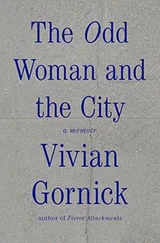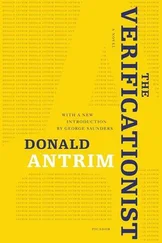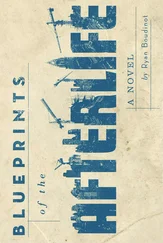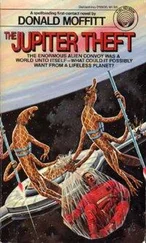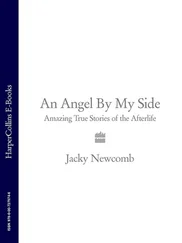The matter of the painting was, as far as I was concerned, now dropped in earnest. One day, though, I got a phone call — yet another update — from my mother. It seemed, as I remember the story from her, that S. had gone to a bar on Miami Beach where he fell into conversation with a pair of foreign men, or maybe it was just one man. The men, or man, claimed to have connections to art dealers abroad, perhaps in Holland. After a while, S. got up his nerve and pulled out the photograph of the painting. I had the impression, listening to my mother, that S. did not explain his ideas about the identity of the painting; rather, he dug the picture out of his wallet, handed it over, and waited for a response. The response was one of amazement. Where had S. found this picture? Had he taken it himself? Where was the painting? Had S. seen the painting? Did he know its whereabouts? Did he realize the importance of this find?
According to my mother, the men informed S. that this was, without a doubt, a work by the American painter Frederic Church. It had, S. had told her, belonged to a collection in Europe, and had gone missing in the early years of the century, possibly between the wars, and had been presumed destroyed. This was what she reported to me.
“Jesus!” I said to my mother that day on the phone.
“How about that?” she exclaimed, as if the matter of the painting were now settled.
I said, “Are you serious? Do you believe any of this? What’s he going to do with the painting? Where is it? Is it still in storage? What kind of storage? One of those outdoor sheds? Is the shed waterproof , I hope? Wait a minute. Does the painting belong to him? Is it insured ? Did whoever it was in the bar say anything about its value ? What bar was it? How do we know that any of this is for real? A Church ? I can’t believe it’s a Church. Shit. What else did S. say?”
“I don’t know. I don’t know the answers to any of your questions. All I know is what I’ve told you,” my mother said, and I said, speaking of S., “How in the world is he going to cope with this?”
“I’ve told you, I don’t know, Don.”
“Is he living out on the Beach?”
“I think so.”
“Is he drinking?”
“Yes.”
“I’m sorry.”
“I know you are. I am, too.”
“There’s nothing to be done?”
“Don, I’ve done everything I can do. He’s in God’s hands now. He’s in God’s hands.”
In August 1992, Hurricane Andrew struck the southern tip of Florida, with winds measured as category four. The storm tore its way through Miami, causing billions of dollars in damage. My mother’s condominium was ripped apart — one whole wall was effectively dismantled and removed by the winds that rushed in from the Atlantic Ocean. All across the neighborhoods in which I had lived as a teenager, streets, homes, and businesses were wrecked.
My mother told me that the storage facility in which S. had deposited his Frederic Church — I had, I realize now, come to think of the painting as belonging to S.; and, with this in mind, and on the strength of hearsay evidence transmitted through channels that I knew from long experience to be unreliable (S. and my mother), had come to regard the painting as a genuine Church — the storage facility, as I was saying, was, according to my mother, very badly damaged. There was, I recall my mother telling me, no hope that anything would or could be left of the painting. For years, I imagined that it had been annihilated. It had been swept out to sea, or blown up the coast, or drowned in the marshlands of the Everglades.
But was that true? Was the painting really gone?
In the summer of 2003, I made an attempt to find S. I assumed he’d passed away, though I did not know for certain. My search led me to a former employer of his in Miami, the owner of a sign-painting business, who believed that S. was alive. But he did not know where, or how, to locate him.
And then — suddenly — I received a message from S., leaving a number in Florida where he could be contacted. I’d called him, and he told me that he was getting his life together again, after thirteen years of drinking. In that time, he had moved up and down the East Coast and had rarely had a proper mailing address or a phone. He had heard only the day before about my mother’s death. We talked for a long time, remembering her, and then he set me straight on a few matters regarding the painting, which, as it turned out, had been water-damaged but not destroyed. He had given it away, he told me, to a former friend, a bartender, who, he believed, had in turn given it to his parents in Connecticut. “It had been haunting me for a quarter of a century. I figured that was enough,” S. said. I noticed that his speech was less halting than it used to be, his voice firmer.
And the painting’s identity? S. had indeed met, in a Miami bar, a Belgian whose father in Antwerp had some connection with the art business. The father in Antwerp, upon seeing S.’s photograph of the painting, had inquired into its whereabouts. According to S., the Belgians offered cash for the painting. A meeting was set up. S. told me, though, that the father in Antwerp never properly identified the painting. Something about these Belgians spooked S. The meeting didn’t take place. S. was left with the feeling that the Belgians knew something they weren’t saying. He told me that he even went so far as to contact the State Department about them. How my mother had decided that the painting had been definitively verified as a Church, S. could not imagine.
And there was one more thing. I had always pictured S., upon first taking possession of the painting in New York, removing it from its stretcher and carrying it in a tube on the plane to Miami. In fact, the painting had been smuggled to Florida by a stewardess, an acquaintance of S.’s, who hauled it in its frame on board an airplane, where, unable to cram the thing into the coat closet, she locked it, against FAA regulations, in a rear lavatory. “She handed it to me in the airport, after we landed,” S. told me. When I asked him if he had gone back to his own art, he told me that he had. I wished him Godspeed, and we rang off.
In early 2003, before I’d ever dreamed of hearing from S. again, I went to Paris. It was the middle of winter, and unseasonably cold. As a result, I spent most of my time indoors. One place I went for warmth was the Louvre. Because of the weather, and because, I suppose, tourism had fallen off in anticipation of the war in the Middle East, the museum was unusually empty, and it was possible to march right up to the Mona Lisa . Until then, I had seen this painting only in photographs; now, standing before the real article, I was struck not only by its beauty but by its oddness. I was taken, in particular, with the way in which the landscape recedes, in balanced, serpentine patterns, behind the figure of the Mona Lisa. It is a distant, verdant landscape, viewed from what appears to be an elevation; looking at the painting, it is difficult to judge, with certainty, the exact spatial relationships between the background and foreground elements. The Mona Lisa herself, though framed by this background landscape that seems to lie far away and far below — I picture her, for no good reason, sitting high on a battlement — nonetheless exists less in relation to the immediate and visible countryside than to some larger world, the world of which the painted landscape is merely a small part. Thus the figure, looking toward the viewer and away from the background vista, occupies a position in the painting that is central in more ways than one, a position defined not only by the optical perspectives that control the painting as a whole but by a subtly disorienting perspective that feels, for want of a better word, spiritual. Standing in front of the Mona Lisa , I thought of S.’s landscapes — the one he’d painted, which was hanging in my living room; and the supposed Church, which at that time I thought was gone forever. In both paintings, I realized, the physical perspectives are destabilizing, to the extent that the viewer is asked to communicate — visually — with the artist in a way that is not, in essence, only visual. During the years when S. was traveling to and from New York, I’d asked myself what had prompted him to consider the landscape in the giant frame a Leonardo. Of course, in asking this question I was only a question or two away from other questions, questions having to do not with paintings or with painting techniques but with the ways in which painting techniques had become the vehicles for S.’s fantasies and delusions.
Читать дальше


